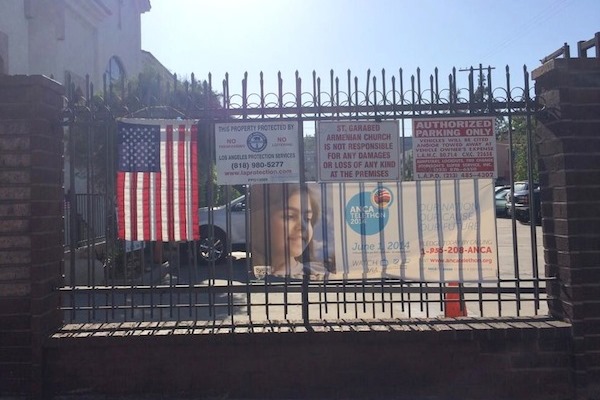
On Election Day, many polling places in Los Angeles suffered from glitches that made it difficult for voters to exercise their rights, according to a report from the Thomas and Dorothy Leavey Center for the Study of Los Angeles at Loyola Marymount University.
The report, released today, reveals a disappointing number of irregularities at dozens of polling places in Los Angeles. While most problems were minor, many surveyed locations had major problems, from one where voting machines had no ink, to another where volunteers did not show up until several hours after the polls opened.
“Access to a fully operational polling place is crucial to ensuring that voters can participate in our democracy,” said Fernando Guerra, director of the Center. “While many of the problems we found could be considered minor, enough minor annoyances can add up to prevent people from voting who otherwise would have.”
On Tuesday, 30 student volunteers visited 375 of the city’s roughly 1,000 polling places, where they observed and recorded conditions at each of the locations, ranging from how many poll workers were available to whether there was free parking or the location was visible from the street.
According to the report, at 30 percent of polling places, the address was not immediately visible from the street. More than 12 percent had malfunctioning voting booths, and nine percent had two or fewer poll workers on-site when they were visited.
Additionally, only about half of the locations observed had dedicated parking lots available, meaning voters elsewhere had to compete for street parking, which can be subject to limited availability, metering or other parking restrictions.
“In most cases, the city’s polling places are in good condition,” said Brianne Gilbert, the Center’s associate director. “The vast majority of locations were well-lit, offered easy access, and had ballots available in multiple languages. But this was a low-turnout election. During a Presidential election, the number of problems we found could have had prevented thousands of Angelenos from making their voices heard.”
Locations with voting problems were spread throughout the city’s council districts. In District Seven, half of the polling places’ addresses were not deemed easy to see from the street, and in Council District Two, nearly half (48 percent) of the polling places visited had voting machines on hand that did not work.
One bright spot was the Voter Bill of Rights, which was posted in 97 percent of polling places visited. This document is the result of state legislation passed in 2003 after the Center’s first study on polling place accessibility, conducted during that year’s gubernatorial recall election, found that many polling places did not meet basic accessibility requirements.



